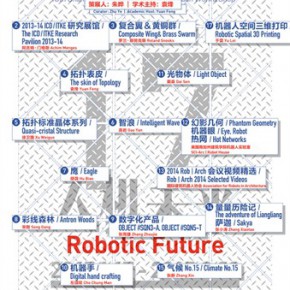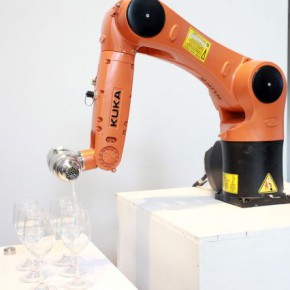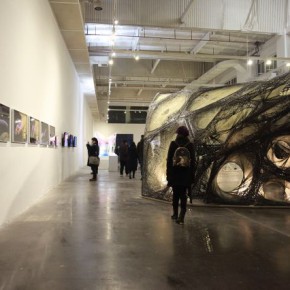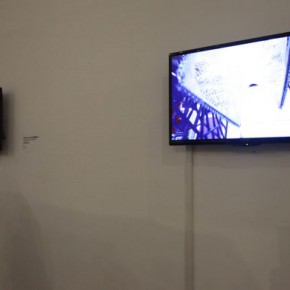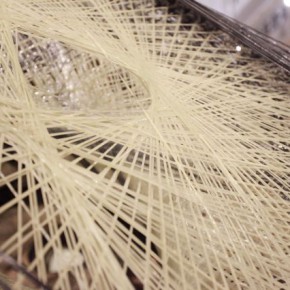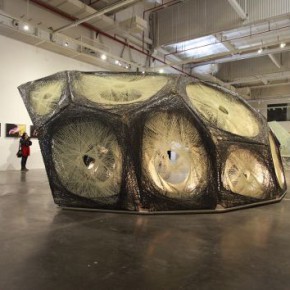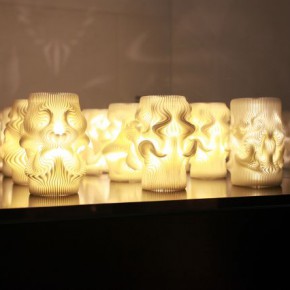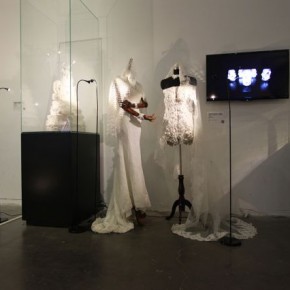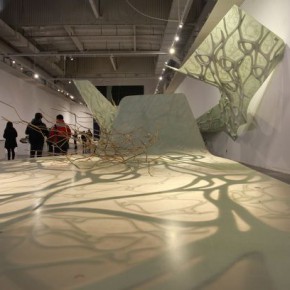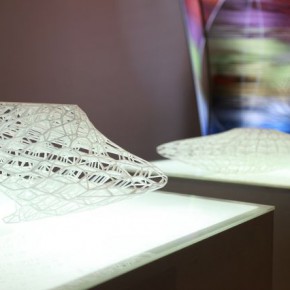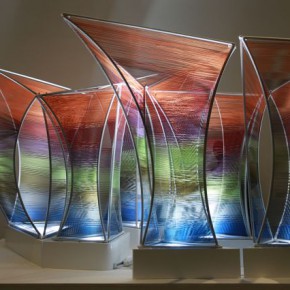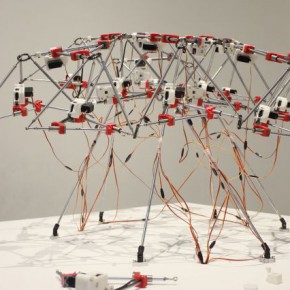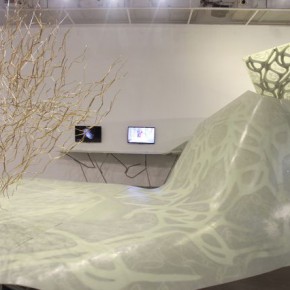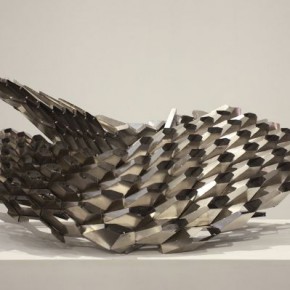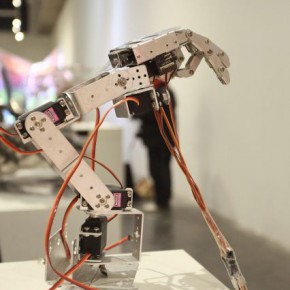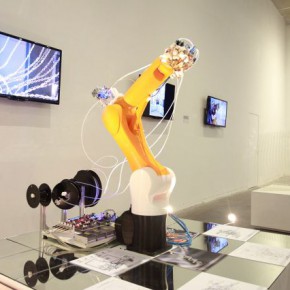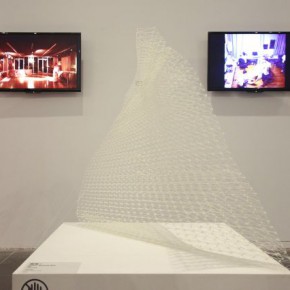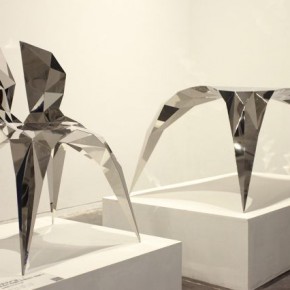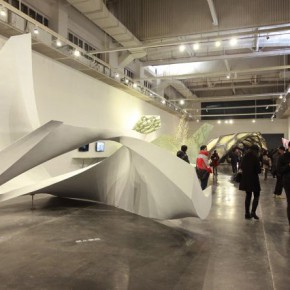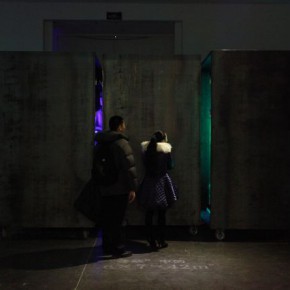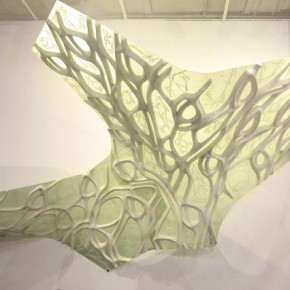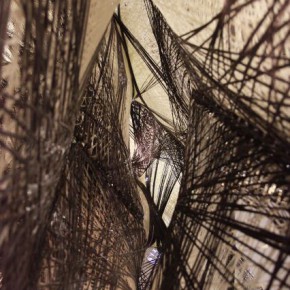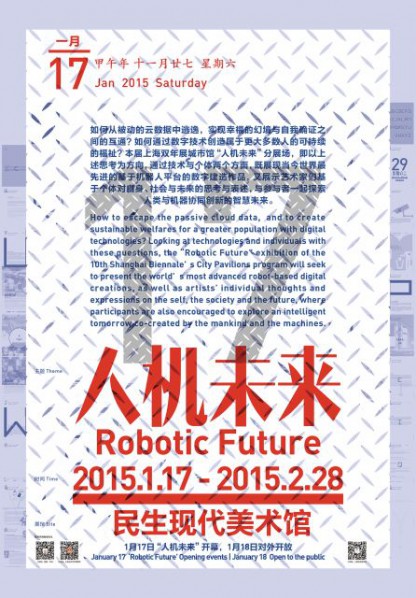
City Pavilion of the 10th Shanghai Biennale joins hands with Minsheng Art Museum to present the new exhibition "Robotic Future". The exhibition includes 18 pieces / group of installations and videos by artists from both home and abroad. The exhibition will last untill February 28th, 2015.
It has been more than a century since the intelligence of machines first started to fascinate architects. In 1910, French artist Villemard published his utopian vision of an architect building a house with robotic labor; in 1964, avant- garde architectural group Archigram imagined a walking city, constituted by intelligent buildings or robots in the form of giant, self-contained living pods that could roam the cities; in 1980s, Japanese architecture firms started to trial tailor-made robots when building skyscrapers, a trend forced to halt due to the early 1990s recession.
But in recent years, through the application and development of industrial robots, architects and designers have been using their accuracy, flexibility and multi-functions, to push intelligent architecture to new heights. Such trials are no longer confined to utopian visions or endless researches on new machine models. Instead, with robots’ strong practical foundation in the industrial production, they help bring machines’ advantages in digital architecture into full play by coupling them with architectural software and building tools.
A joint exhibition co-hosted by the biennale’s City Pavilions program and Minsheng Art Musuem, Robotic Future showcases the world’s most advanced robot-based digital architectural creations, and invites viewers to explore an intelligent future co-innovated by man and machine. Among these projects are Achim Menges’ ICD/ITKE Research Pavilion 2013-14, Roland Snooks’ Composite Wing & Brass Swarm, Yuan Feng’s Topological Surface, Xu Weiguo’s Quasi-cristal Structure, Gao Yan & Guo Xin’s Intelligent Wave, Hu Biao’s Eagle, Song Gang & Cai Jiabin’s Antron Woods, and Zhang Zhoujie’s OBJECT #SQN3-A, which all used new materials and solutions to construct spatial forms of the future world. While architecture is designed for future generations in terms of space, artificial intelligence bears yet a similar responsibility – to change the future generation as well as to technologically shape our new looks. Projects with this focus, including Sam Cho’s Digital Hand Crafting- An Extension of Our Memory in Fourth Dimension, Dai Sen’s Light Object, SCI-Arc | Robot House’s Phantom Geometry/Eye, Robot/Hot Networks, Bot & Dolly’s Box, Association for Robots in Architecture’s Rob | Arch 2014 Selected Videos, are all trying to provide us with a visual possibility to peek into the future mankind.
Without question, the architectural spatial structures and artificial intelligence technologies are influencing mankind’s historical progress both externally and internally. But what has always been more important is that how we embrace our own future in such a background. Technologies cannot solve all issues in this world, but given the fast-changing society, we just tend to be grasped by the fear of perplexity. Charlotte Gyllenhammar’s Spectator hopes to portrait children’s fear to the cruel adult world; Zhang Xiaotao’s cartoon video The Adventure of Liang Liang manifests the artist’s thought that children and adults are the future and the past of each other, and man tend to feel small and helpless when facing the vast world; and Zhang Xin’s installation Climate No.15 just wants to tell about a contemporary world that even adults feel unfit – the artist removed all sculptures and personal items in her studio and placed them in three huge iron boxes to sculpt a life in a totally different manner.
In all, Robotic Future ofthe 10th Shanghai Biennale City Pavilion hopes to offer a way-out for the current generation to get rid of their heart-felt confusions – through art, architecture, and technology – no matters how fascinating the visual effects of machines and technologies are, they have to be human-oriented to be part of our life as well as have a place in our history.
About the exhibition
Dates: Jan 17, 2015 - Feb 28, 2015
Opening: Jan 17, 2015, 16:00, Saturday
Venue: Minsheng Art Museum (Shanghai, China)
Curator: Zhu Ye
Artists: Association for Robots in Architecture, Cho Chung Man, Dai Sen, Gao Yan, Charlotte Gyllenhammar, Hu Biao, Ma Steven, Achim Menges, SCI-Arc | Robot House, Roland Snooks, Song Gang, Xu Weiguo, Yu Lei, Yuan Feng, Zhang Xiaotao, Zhang Xin, Zhang Zhoujie
Organizers: Minsheng Art Museum, Shanghai Contemporary Art Museum
Courtesy of the artists and Minsheng Art Museum, for further information please visit www.minshengart.com.


